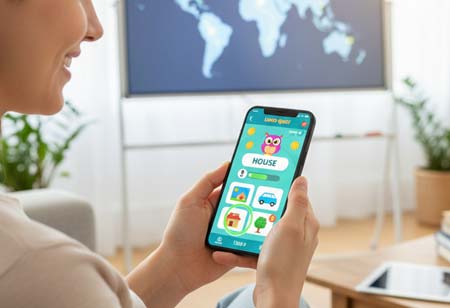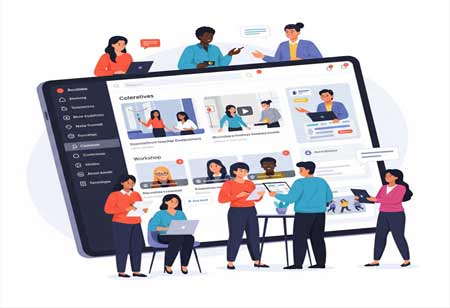THANK YOU FOR SUBSCRIBING
Be first to read the latest tech news, Industry Leader's Insights, and CIO interviews of medium and large enterprises exclusively from Education Technology Insights
Shaping the future: Technology's impact on education
Technology integration in education has been challenging yet yielding. It plays an important role in student engagement.

By
Education Technology Insights | Friday, August 02, 2024
Stay ahead of the industry with exclusive feature stories on the top companies, expert insights and the latest news delivered straight to your inbox. Subscribe today.
Incorporating technology has revolutionized learning students for children, catering to a diversified learning speed and process. Utilization of interactive apps, podcasts, and digital simulation, educators are creating an immersive and dynamic learning environment, helping students build digital skills for the future.
FREMONT, CA: Technology integration in education has been challenging yet yielding. It plays an important role in student engagement. It has been noticed that new forms of learning experiences capture and engage students better than the traditional blackboard method. Digital education helps students foster a relationship with technology at a young age, which will eventually be fruitful for them during their careers. This article talks about how technology is used to leverage deeper engagement and involvement for students in an enhanced learning environment.
Virtual Models and Simulations
Incorporating digital simulations and virtual field trips gives students an immersive learning experience. Through these technologies, they can experience and learn about different cultures worldwide from within the walls of their classroom.
Videos & Podcasts
Podcasts and video materials provide a more engaging environment for students than the traditional method. This method caters to diverse learning needs, allowing students to learn at their own pace and enhancing their understanding. It is an excellent way of teaching because it maintains student engagement and keeps them interested in the curriculum.
Online tests
Online quizzes and tests serve as engagement tools for student comprehension and to review how effectively the students have understood a topic. These provide immediate feedback for the students and teachers to track progress and understanding.
Collaborative cloud-based tools
Platforms like Google Docs and Microsoft Onedrive enable collaboration among students by allowing two or more students to work together on a project simultaneously. They streamline the learning process by making it faster, more organized and inclusive of each child.
Technology-driven assignments
Replacing traditional homework with digital assignments encourages active participation and indulgence. Whether creating presentations on Google Slides or building projects in Minecraft Edu, incorporating technology in education leads to skill development and caters to diversified learning styles.
Access to diverse sources
With the help of technology and the internet, learning isn't limited to books and libraries anymore. Students can stream YouTube, learning apps, websites and the internet itself to gain up-to-date information about any topic or lesson. The internet can clear any doubts in one tap.
Multimedia Projects
Tools like Canva, Adobe Spark and iMovie enable students to use their creativity through multimedia. These apps allow students to prepare their work uniquely and foster deeper understanding and involvement.
Conclusion
Incorporating technology has revolutionized learning students for children, catering to a diversified learning speed and process. It fosters a deep understanding and encourages engagement among students. With interactive apps, podcasts, and digital simulation, educators are creating an immersive and dynamic learning environment and helping students build future digital skills.







